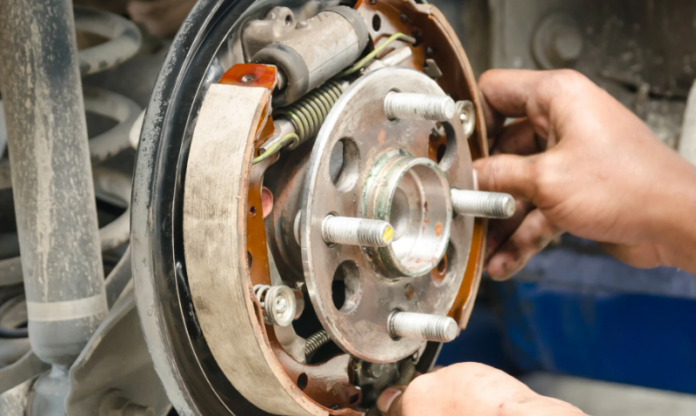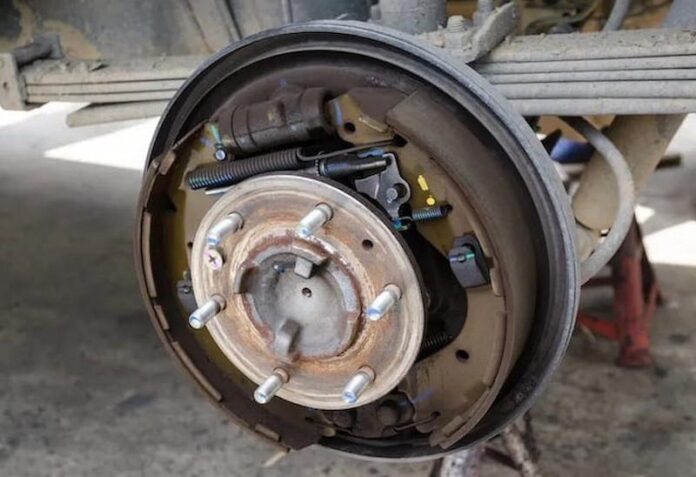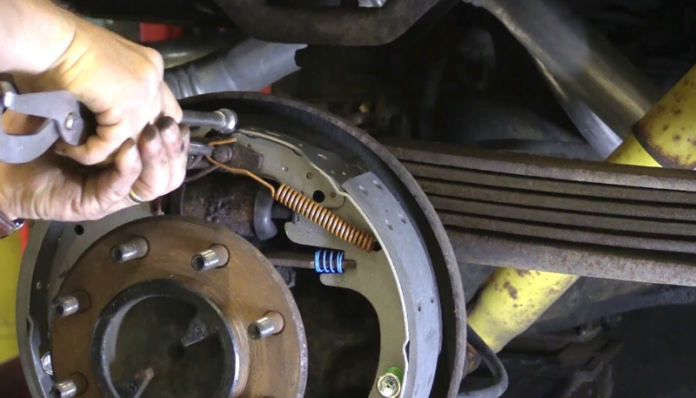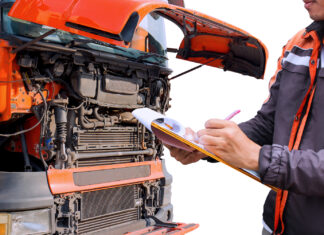Although outdated, drum brakes can still be found on some vehicles today. They are a good choice for those who want effective stopping power without the weight and complexity of disc brakes, as well as easy maintenance over time.
Drum brakes work by using friction caused by a stopper cylinder to stop the wheel when it is time for an emergency stop or regular braking. The cylinder is placed between the brake shoe and the wheel and filled with fluid. When pressure is applied, the piston in the cylinder moves forward, dragging the brake shoe with it so that it can make contact with the wheel. When the two are close together, friction causes the wheel to stop turning. When pressure is released, a spring pulls the piston back and releases the shoe from the wheel.
Drum brakes were popular in early automobiles because they used little space and were easy to manufacture. They are also still used today on some vehicles for their low cost and effective stopping power.
History of Drum Brakes
The first drum brakes were created by Charles Goodyear Jr., son of the founder of the Goodyear Tire and Rubber Company. He was working on a new kind of shoe for shoes when he realized that it would make good brake wheel drums. His idea was to put metal studs around the outside of a solid rubber disc so that when pressure was applied, the studs would dig into the wheel, stopping it from turning. In 1898, he received a patent for this invention and formed the Goodyear Tire and Rubber Company to manufacture them.
Early wheel drums were made of leather, but this was problematic because they would dry out and become brittle over time. In the early 1900s, drum brakes were made with a wooden backing that was covered in fabric to resist wear from friction. This gave them more stopping power than regular shoes.
Drum brakes are usually found on the rear wheels of vehicles. They can also be found on the front wheels of trucks or other heavy-duty vehicles that need extra stopping power. These types of brakes are less common on most cars today because they have been replaced by disc brakes, which are more efficient and lighter in weight.
The Anatomy of Drum Brakes
The most common type of drum brake has two shoes that rub against the inside of a wheel when it is time to stop. This style is called the “dual-shoe” design. The shoes can be made from many different materials like leather or nylon depending on what kind of friction is desired. Some drums also use fibre washers instead of shoes to increase stopping power without adding extra weight to the wheel.
The shoes are connected to a lever that is placed near the driver when it is time to apply pressure. When this happens, fluid from the brake cylinder is sent to a piston inside the drum so that friction can be created between the shoe and the wheel. As the shoes start to grind against each other, they transfer the kinetic energy into heat which slows down the car or truck. The shoes are released from the wheel once the vehicle stops moving. This style of brake is good for inexpensive vehicles that don’t need a lot of stopping power because it is lighter in weight than other types of drum brakes.
In the early days of automobiles, there was no way to stop quickly if something went wrong. Because of this, cars often had emergency levers in case the driver needed to stop suddenly. These levers would activate a brake behind the back axle and were used for both regular and emergency stops. This type of system was not very effective though and could damage the wheel or breakage.
The Rise of Disc Brakes
As aforementioned, drum brakes have largely been replaced by disc brakes. Disc brakes are lighter weight, more efficient and easier to maintain than drum brakes. Because of this, they are becoming the standard on most vehicles today. There are different types of drum brakes, such as slotted and floating, but they all work the same way. The only difference is in how much pressure and force can be applied to them before breaking.
Disc brakes provide more stopping power than drum brakes, and they are lighter weight because there is no extra cylinder or fluid needed. They also have a higher tolerance for damage than drum brakes, so they are more popular on high-end vehicles that need stronger stopping power and can handle the additional weight of disc brakes. In order to work properly, the pads must be replaced regularly and the brake fluid should be changed every two years.
What to Consider When Choosing Replacement Brakes
When choosing either drum or disc brakes, it’s important to take a few factors in mind, including the weight of the vehicle and how much stopping power is needed. Disc brakes are more common on most vehicles today, but drum brakes can still be found on some cars because they are cheaper and easier to maintain over time.
Drum brakes have a lot of variations in design. They can use one shoe or two, slotted or solid, floating or non-floating. Some even use fibre washers instead of shoes for extra friction when stopping. All these different types of brake drums give manufacturers more options when it comes to making their vehicles, which helps them stay competitive in the market. Some of the best drum brake manufacturers are Bosch, Tru Stop and Silverline.
You can find brakes that are compatible with your vehicle online. You can also find them at local auto parts stores or mechanic shops. These brakes are available in many different colours, including black, yellow and red. Black is the most common colour because it is a good contrast to the rest of your vehicle’s paint job. Yellow works well with yellows and other light colours while red goes well with darker shades of purple, brown and green.












